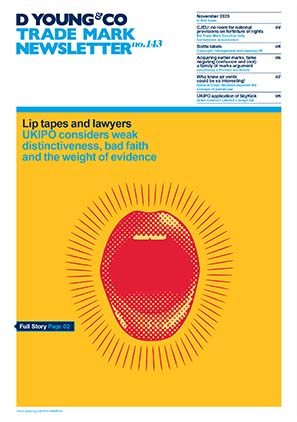Acacia v Audi and Porsche: the wheel meaning of the repair clause
By two joined cases, the CJEU has provided guidance on the scope of the “repair clause” within Article 110(1) of the Community Design Regulation. The repair clause excludes community design protection for designs which constitute a component part of a complex product for the purpose of the repair of that complex product so as to restore its original appearance. Designed to ensure customers have access to a competitive market for spare parts for repair purposes, the scope of the repair clause was challenged here in the context of automobile spare parts.
Audi and Porche design infringement actions against Acacia
Car manufacturers Audi and Porsche brought separate actions against Acacia (an Italian manufacturer of replica wheel rims for cars) in Italy and Germany respectively, essentially seeking a declaration that Acacia’s manufacture and sale of replica wheel rims was an infringement of Audi and Porsche’s registered community designs.
According to the referring court in the Audi case, some of Acacia’s wheel rims were identical to Audi’s wheel rims, however Acacia stamped “NOT OEM” (not made by the original equipment manufacturer) on their wheel rims, and their accompanying documents and information indicated that the wheel rims were sold exclusively for the purposes of repair. In the case of Porsche, ostensibly some of Acacia’s wheel rims were identical whilst others were different sizes and colours to the originals.
In both case, Acacia invoked the repair clause as a defence, and the national courts referred requests for a preliminary ruling to the Court of Justice of the European Union (CJEU).
Ruling of the CJEU
First, the CJEU considered whether the repair clause could only be used when components of a complex product are dependent upon the shape of the product (as argued by Audi and Porsche), or whether it could also be used for parts such as wheel rims which can be made in many ways as their shape is not determined by the kind of car (as argued by Acacia). The CJEU ruled the latter applied such that the repair clause extends to any component parts regardless of whether the protected design is dependent upon the appearance of the complex product.
In its analysis, the CJEU took into consideration the rationale behind the repair clause, being to avoid captive markets and to prevent consumers from being tied to purchasing external parts from the same manufacturer as the complex product.
Second, the CJEU considered whether the repair clause applied only to parts which are identical to the original or also to standard variants.
The CJEU noted it was common ground that alloy wheels may be protectable by registered designs (subject to novelty and individual character) as they are visible in normal use. A wheel rim, which visibly contributes to the appearance of a car, was considered a component part of a complex product (car) as without them, the car would not be in normal use.
The wording of the Community Design Regulation is that the purpose of the repair is to restore the original appearance of the complex product to when it was put on the market. The CJEU held that the repair clause only applies to visually identical replacement parts and not those differing, for example, in colour/size for customisation purposes.
Finally, the CJEU imposed a “duty of diligence” on the manufacturer or seller of the component parts (as the entity relying on the derogation under the repair clause) to ensure that downstream users comply with the repair clause, that is, to ensure that consumers only use the parts for repair and not customisation. In particular, the duties include:
- Clearly and visibly informing downstream users on the product/packaging/documents that the component part incorporates a third party design and is for the purposes of repair of the complex product to restore its original appearance;
- Through (for example) contractual means ensuring users comply with the repair clause; and
- Not selling parts to users where they have reasonable knowledge that the repair clause will not be complied with.
In short
This case provides some guidance on the repair clause, including that the derogation applies to all component parts if the repair serves to restore the original appearance of the product.
It will be interesting to see how the case is applied by the national courts and the extent to which the ruling applies to other spare parts industries; and how a duty of diligence may be implemented and monitored.
Case details at a glance
Jurisdiction: European Union
Decision level: Court of Justice of the European Union
Parties: Acacia Srl v Pneusgarda Srl, in insolvency, Audi AG (C-397/16), and Acacia Srl, Rolando D’Amato v Dr. Ing. h.c. F. Porsche AG (C-435/16)
Date: 20 December 2017
Citation: ECLI:EU:C:2017:992, EU:C:2017:992, [2017] EUECJ C-397/16 (joined cases C-397/16 and C-435/16)
Full decision (bailii): http://dycip.com/acacia397

